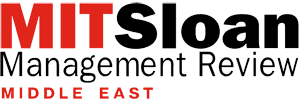The Missing Link Between Purpose and Performance
Team leaders hold the key to translating corporate purpose into employee commitment through regular dialogue, balanced relationships, and worker autonomy.
News
- UAE Approves National Encryption Policy for a Post-Quantum Shift
- OpenAI API Users Hit With Third-Party Security Breach
- Uber and WeRide Launch First Driverless Robotaxi Service Outside the U.S. and China
- UAE Unveils Its First Marketplace for Buying and Trading Trademarks
- ACI Flags Sharp Rise in ‘Friendly Fraud’ as Thanksgiving–Cyber Monday Spike Looms
- WhatsApp’s AI Clampdown to Send Microsoft Copilot Packing by Jan 2026

Andrew Baker/Ikon Images
BUSINESS LEADERS USE CORPORATE PURPOSE to define the strategic direction of a company and imbue the collective efforts of its employees with a meaning beyond simply increasing shareholder value. For example, Veolia, a large global service provider in energy, waste, and water management, pledges “ecological transformation, that is our purpose,” while toolmaker Stanley Black & Decker declares that it is “for those who make the world.” Such purpose statements aim to guide the direction of a company’s growth and inspire commitment from its employees. However, when the leadership team of an organization articulates a corporate purpose and seeks to incorporate it into the goals and activities of the organization, it tends to make managers’ role more complex.
Much has been written on aligning operational goals with purpose-driven objectives and on incorporating corporate purpose at various levels of the organization. Still, it is ultimately team leaders at various levels of the organization who must translate holistic aspirations into day-to-day operations, often acting as both ambassadors of change and enforcers of traditional corporate demands. Since they are tasked with implementing the purpose-oriented visions and business strategies of senior executives while addressing the practical concerns of employees and meeting operational objectives, team leaders can act as critical intermediaries, responsible for resolving the tension between immediate performance metrics and longer-term purpose-driven initiatives.
To better understand how team leaders navigate this challenge, we conducted research into how they communicate corporate purpose-driven objectives and engage their team members in meeting them. We use the term purpose dialogue to describe regular, deliberate discussions leaders have with their teams about corporate purpose. Leaders who have those conversations, maintain a good relationship with each member of their team, and give them autonomy in carrying out their tasks achieve a significant boost in individual employee commitment to their team, roles, and responsibilities. For leaders striving to chart a purpose-driven strategic direction for their company and have their workforce pulling in that same direction, employee commitment can be a major determinant of success.
The Power of Purpose Dialogue
The connection between team dialogue on corporate purpose and employee commitment is profound yet frequently underestimated in both academic literature and management practices. Using Korn Ferry Institute data, our study in the journal Long Range Planning included 57,000 employees across 469 companies. Purpose dialogue was measured as the average of responses to two questions on a 6-point scale. The first question asked team members to assess the direct communication they receive from their team leader about how the company’s direction and vision benefit the team. The second question asked team members to score the extent of input and feedback that the leader seeks from them on the organization’s direction and purpose.
We then measured individual commitment to the team by asking a series of 10 questions that used well-established psychometric scales. We found that a 1-point increase in purpose dialogue between leaders and their team members boosted individual commitment levels in teams by 10%, on average.
Heightened commitment is not merely a measure of morale or satisfaction — other studies have found that it tangibly translates into improved team performance, reduced turnover, and increased motivation and innovation among employees.
For instance, at a global consulting firm whose purpose is to undertake transformations to bring about a desirable economy, we observed that team leaders consistently discussed how the organization’s overarching purpose directly benefited clients and team members. At the end of each project, partners in charge had to collect junior- and senior-level consultants’ assessment of the project and how much the project contributed to the corporate purpose. These regular dialogues helped build alignment between team objectives and project methods. Employees, feeling valued and clear about their individual and collective roles, consequently displayed higher levels of engagement, loyalty, and collaborative effort than their peers at competing companies. Such commitment positively influenced outcomes such as project delivery timelines, innovative solutions, and client satisfaction, as evidenced in client surveys and sector net promoter score analyses.
Robust dialogue is the foundation for shared understanding and mutual agreement on priorities. It drastically enhances employees’ pursuit of the organization’s broader purpose. Conversely, without consistent and reciprocal communication, employees often perceive purpose statements as empty, wishful rhetoric, which significantly diminishes their effectiveness.
The Role of Relationship Quality
Purpose dialogue can be powerful, but its effectiveness on team commitment depends on the underlying quality of the relationships between team leaders and individual team members. At their best, high-quality relationships between a team leader and their team members are marked by mutual respect, trust, and the equitable distribution of resources and opportunities. Such relationships significantly amplify the positive impact of purpose dialogue on team commitment and ultimate outcomes. Our research confirmed the importance of leader-member relationships: We found that a 1-point gain on a 6-point scale measuring team member relationship quality increases team commitment by 7% to 9%, on average.
Furthermore, high variation in how team members experience their relationship with the leader is also likely to undermine the relationship between purpose dialogue and team members’ commitment. Team unity can severely fracture when some team members experience strong, supportive interactions with the leader while others feel ignored or undervalued. Such disparities often lead to toxic comparison, resentment, reduced cooperation, and lower overall team cohesion, which dilute any positive effect of purpose dialogues. We found that a 1-point increase in variation in leader-member relationship quality directly degrades team commitment by about 3% and indirectly negatively impacts the association of purpose dialogue with team commitment by about 2%.
Take, for instance, an AI and cybersecurity company we analyzed that has a stated purpose to turn clients’ vulnerabilities into future strengths. While team leaders regularly engaged in productive and clarifying conversations about corporate purpose, the workforce experienced significant management disparities within and across teams. In the absence of consistent leadership practices, employees were subject to individual managers’ personalities and preferences, which resulted in high variations in leader-member interactions, low commitment to purpose, and inconsistent strategy implementation. Salespeople tended to disregard the corporate purpose in favor of selling more contracts, whereas engineers and solution-oriented employees adhered to it. As a result, different operational teams conferred very distinct degrees of importance to corporate purpose. Rather than becoming more integrated, the sales and services teams experienced a drop in cohesion and commitment to the company as the chasm between them widened.
In contrast, Best Buy’s spectacular turnaround in the 2010s was rooted in its redefined purpose: “enriching life through technology.” As Hubert Joly, the former CEO of Best Buy, recounts in his 2021 book, he and his team put together a series of strategies between 2014 and 2019 to guarantee not only that the average experience of employees in stores increasingly aligned with the corporate purpose but that variance in the quality of leader-employee relationships in stores decreased. The company embarked on a series of initiatives to cultivate a more purpose-oriented culture, including holding cohesion workshops, having open conversations on difficult subjects (such as discrimination, pay, and incentives), sharing best practices, turning annual sales conventions into peer-to-peer learning exchanges, and developing HR policies geared toward supporting employees’ well-being. Best Buy based its renewal on the core idea of reenergizing store managers, sales, and service forces through consistent management and more consistency in employee treatment and experience. This movement started at the top of the organization, where executives who did not embrace the corporate purpose and a more authentic leadership style rooted in purpose dialogue were asked to leave. The remaining, more cohesive, leadership team immediately reduced variance in team relationship quality. As a result, absenteeism decreased; sales increased; return on invested capital more than doubled, from 10% to 22%; and the company’s stock price grew from $28 to $115 over five years.
When there is variation within a team (and across teams within an organization) in terms of leader-member relationship quality, most, if not all, of the benefits of the average effect of purpose-based management dissipate. Managers must therefore focus not only on the average employee experience of purpose-driven leadership but also on the heterogeneity that exists within the teams and across the company.
The Effect of Autonomy
The autonomy granted to team members is another powerful lever that enhances the effectiveness of purpose dialogue. Autonomy refers to the degree to which team members can independently execute their responsibilities without excessive oversight. Our research highlights autonomy as a significant amplifier of purpose dialogue’s positive effects on teams’ and their individual members’ commitment. When team leaders value autonomy, they signal profound trust and confidence in their employees’ capabilities and reinforce the positive connection between purpose dialogue and commitment. Team members with more autonomy experience purpose dialogue as more authentic, which in turn translates into more agency to execute their responsibilities in line with purpose. We found that an increase of 1 point on a 6-point scale in team members’ perceived autonomy adds 3% to 8% to team commitment for the average team.
Consider two distinct teams within a health care organization (a composite of two real organizations) whose purpose is to humanize post-cancer treatment. One operates with a high level of autonomy: Nurses and other employees are encouraged to make independent decisions aligned with clearly discussed and agreed-upon purpose-related goals within medical and health care constraints. The other team experiences constant oversight, with leaders — mainly doctors — being directive in conversations with team members, rigidly controlling activities, and limiting nurses’ and other employees’ discretion. The team with high autonomy consistently delivers better patient satisfaction and health outcomes, higher productivity, more innovative problem-solving, and stronger individual commitment, all of which are directly connected to a well-understood and actively reinforced corporate purpose. Conversely, the tightly controlled team with less purpose dialogue and low autonomy struggles with engagement and motivation, despite having a similar corporate purpose.
Overall, our research found that team members’ commitment increases by 10% with effective purpose dialogue, and that both a low variance in quality of leader-team member relationships and an increase in team member autonomy add (directly and indirectly) an extra 5% and 10%, respectively, to commitment levels.
How Organizations Can Operationalize Purpose at the Team Level
We recommend that companies adopt a practical framework with three core action steps to effectively make use of these insights. The first two are valid at both the corporate and team levels.
1. Establish consistent dialogue practices around corporate purpose. Leaders should institutionalize regular, structured discussions regarding corporate purpose, explicitly connecting daily tasks with purpose-related objectives. This practice should start at the very top of the organization. Leaders should also encourage regular debates, exchanges of best practices, and post-mortem case analyses where employees can freely express their views on how the corporate direction resonates with and supports their personal and professional goals. This practice can strengthen purpose-based culture at the individual, team, and company levels.
2. Eliminate misalignment, and maintain balanced relationships. Limiting leadership disparities from spreading within teams or units, as well as across units and divisions, is an essential part of building a cohesive culture. It creates focus and helps managers and employees work toward the same objectives. Leaders must be aware of potential biases and consciously allocate attention equitably, ensuring that every team member feels equally valued. They should periodically assess relationship quality, solicit employee feedback, and address disparities. Such practices will help leaders foster stronger team cohesion and productivity, and promote effective purpose dialogue and execution.
3. Foster autonomy. Effective autonomy within a team involves clearly outlining strategic objectives and metrics, and trusting team members with significant freedom in execution. This approach enhances engagement, encourages initiative, and amplifies the positive impact of purpose dialogues by empowering employees to take ownership of their roles and results.
Addressing the challenge of operationalizing corporate purpose throughout an organization fundamentally hinges on effective dialogue at the team level. Resolving the tension that corporate purpose finds at team leadership levels requires leaders to foster consistent, meaningful dialogue about corporate goals at the team level and beyond. Leaders who actively involve team members in purpose discussions, consciously manage equitable relationships, and promote employee autonomy significantly enhance team commitment and alignment around corporate purpose and business results.





